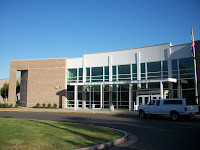 Summer always includes some unexpected personnel changes. Teachers transfer, they move or may take another position. Finding the right people can occasionally be a challenge. When I was a principal I once conducted an interview with a teacher who called from a phone booth in a campground. It was a great interview and I ultimately offered her a job but it certainly was one of the most unique interviews in which I've participated.
Summer always includes some unexpected personnel changes. Teachers transfer, they move or may take another position. Finding the right people can occasionally be a challenge. When I was a principal I once conducted an interview with a teacher who called from a phone booth in a campground. It was a great interview and I ultimately offered her a job but it certainly was one of the most unique interviews in which I've participated.
Hiring is often guided by district policy but there are some important things you will want to consider. First, develop your selection criteria. Each criterion should be relevant to the work. Differentiate between the skills or characteristics that are required and those that are simply desirable.
Second, create and use a set of standard interview questions. They should be linked to your criteria but open-ended enough so that they provide in-depth information about the candidates. Principals I've worked with have suggested these examples because they don't lend themselves to a single answer and allow you to assess how the candidate responds.
- What do you see as your strengths and how will they help you in this position?
- As you think about your past work experience, what has been your biggest challenge?
- Talk with me about the things you consider when designing a lesson.
- When you're teaching a lesson how do you monitor whether students are learning?
- Imagine you were hired for this position and it is a year later. What was the best part of your first year and what was your biggest challenge?
Finally, follow the same process for every one you interview. Even when you realize early in the interview that a person is not the best fit for the job, you need to respect the candidate and finish the interview. Otherwise they can suggest that they were not given an equal opportunity to share their background and skills.
I also like to send everyone who interviewed a short written note thanking them for applying and considering my school. Even if the person is not a fit for a particular job they might be right for another position in the future.
Schools are basically people places. So it is important to hire the right people and nurture talented employees so that they feel part of the school. That can begin during the interview and hiring process. Asking about student learning and professional growth sends a signal about their importance to you.
I'd enjoy learning from you about your experience with hiring and look forward to hearing from you.
 In recent years I've found that the mere mention of "rigor" provokes a variety of reactions. Some see rigor as an agenda that undermines the student centered school. Others see rigor as some political agenda. Others see rigor as a commitment to assuring that every student is provided the tools for success in school.
In recent years I've found that the mere mention of "rigor" provokes a variety of reactions. Some see rigor as an agenda that undermines the student centered school. Others see rigor as some political agenda. Others see rigor as a commitment to assuring that every student is provided the tools for success in school. 
















